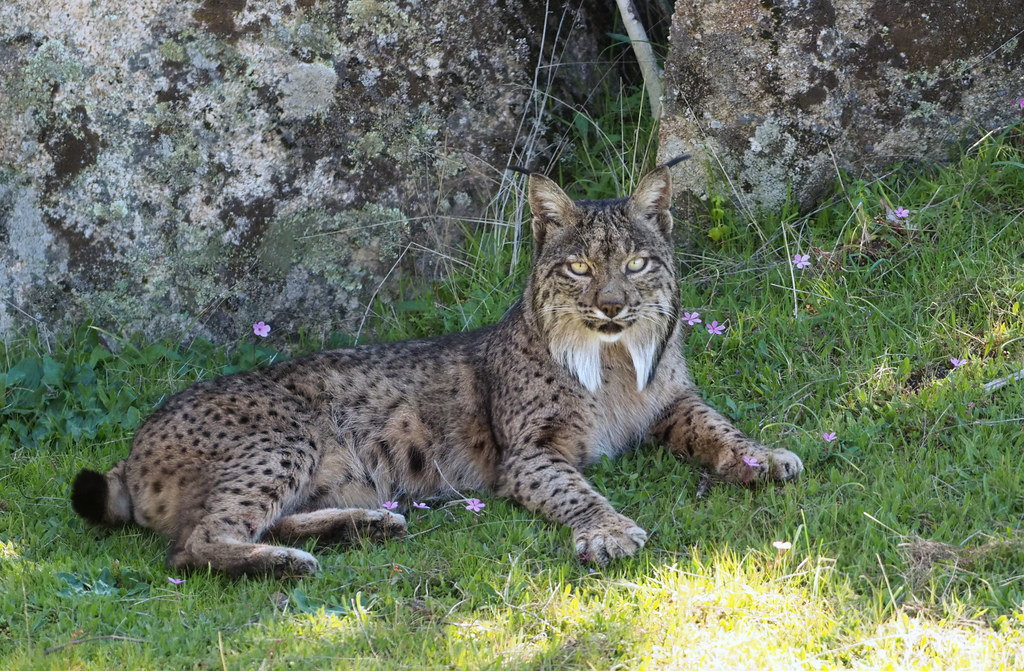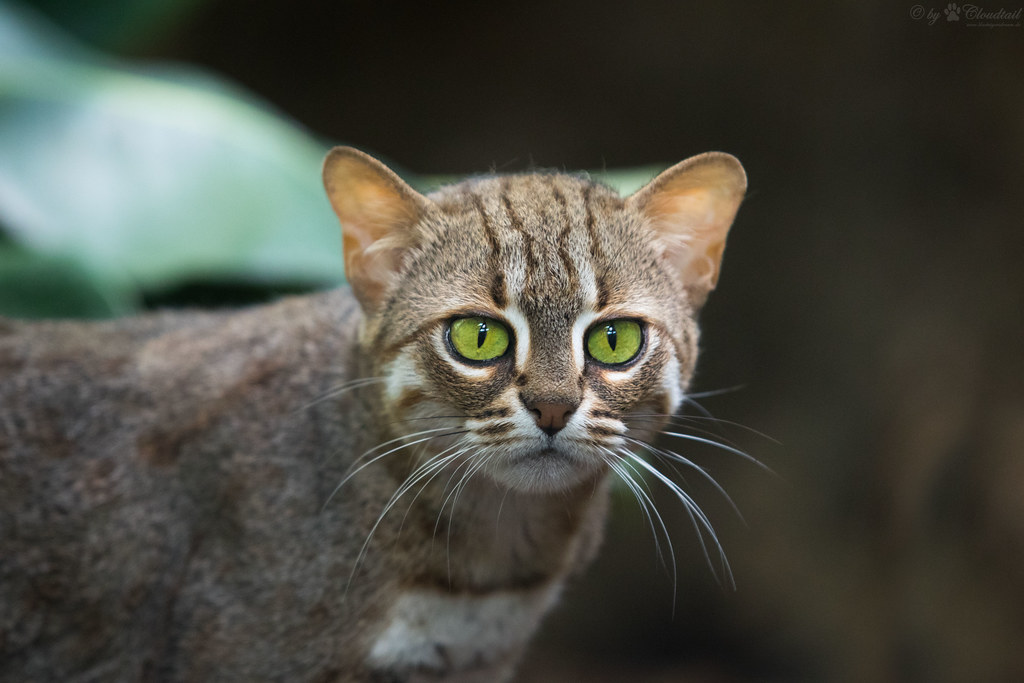
Wild nature has so many pearls that many people may not even know about. For example, the diversity of wild cats can surprise even those who can pry themselves as experts. Wild feline species amaze us with the diversity and beauty they have. Unfortunately, many of these representatives are endangered species due to the activity of people. Deforestation, excessive poaching, inbreeding, and else leaves very little chances for these wild animals to live the lives they used to have. Let's see what the rarest wild cats are before. We need to learn to appreciate what we have as long as we have.
Rusty-Spotted Cat

The Rusty-Spotted Cat, which can be found only in India, is the smallest in the world. It is about 14 to 19 inches in length and can weigh up to 3.5 lbs. But don't be fooled by its appearance, though. Yes, we know that it looks adorable, it's hard to miss that. But these wild cats are still wild and can be quite dangerous. However, the chances of accidentally seeing it somewhere in the wild are incredibly low. These cats are among the most secret animals out there. Indeed, their species has relatively recently been discovered in comparison to the rest of their kind.
Also, don't be fooled by their small sizes. They are quite capable of standing up for themselves. First of all, Rusty-Spotted Cats are great hunters. Their success rates in hunting make up to 60%, which is the highest number among all wild cats. They usually go after small prey like birds, lizards, or various small rodents. Though they can also eat some large insects if the night was unfruitful. You can check these advanced writers reviews if you are thinking of talking about these cats in your next biology paper.
Siberian (Amur) tiger

Siberian tigers exist in cold climates, most often seen in Far East Russia. They are the largest representatives of wild felines. Unfortunately, this species is on the verge of distinction. The population was almost completely wiped out by the poachers who killed those tigers for pleasure, trophies, and skins. On the bright side, recent years actually show a slow increase in the population of Siberian tigers. Still, they are among the rarest species on the planet. They are also believed to be quite shy and are very rarely seen by people. Even to document their presence in nature may take years. These tigers are extremely good hunters. They are very fast, aggressive, and incredibly strong. Their main prey is wild boar or elk. There is a large area of protected forest in Russia that was created for the protection of Siberian tigers.
South China Tigers

These wild felines have a rather sad fate. In the middle of the 20th century, with the rule of the communist party, they declared the enemies of the people. Suppose you are curious to read more about this era in Chinese history and its effect on wild nature. In that case, you can order a professional academic paper, of course, after reading some high-quality affordable papers reviews. Anyway, currently, the Chinese government is talking about its plans to create a special reserve to preserve the remaining tigers. Though, the truth is, these tigers haven’t been seen for decades now. The last reports about them were made back in the 1970s. Hence, it is impossible to say whether these tigers are extremely endangered or already extinct. The only remaining South China tigers are kept in captivity in South African, where there’s hope for their further breeding.
Borneo Bay cat
 Another rare and endangered wild cat can be found only in Indonesia. These are rather small cats, with only 21 inches in length (almost half of it is the length of their tales). They can weigh up to 9ibs. Currently, there are only slightly over 2000 species of Borneo Bay cats left. Though the government protects these cats, they are still illegally poached. Interestingly enough, this is one of the least researched species in the feline family. Partly, it is due to the place of inhabitants that is Indonesian jungles. Their extinction is also the result of severe deforestation, mainly for the palm plantations. The fears are, people will not have enough time to research these animals before they become fully extinct. If you want to learn more about the consequences of palm oil production, you can read an academized review to learn how you can order research on this topic.
Another rare and endangered wild cat can be found only in Indonesia. These are rather small cats, with only 21 inches in length (almost half of it is the length of their tales). They can weigh up to 9ibs. Currently, there are only slightly over 2000 species of Borneo Bay cats left. Though the government protects these cats, they are still illegally poached. Interestingly enough, this is one of the least researched species in the feline family. Partly, it is due to the place of inhabitants that is Indonesian jungles. Their extinction is also the result of severe deforestation, mainly for the palm plantations. The fears are, people will not have enough time to research these animals before they become fully extinct. If you want to learn more about the consequences of palm oil production, you can read an academized review to learn how you can order research on this topic.
Iberian Lynx

Iberian Lynx is the rare story of success on this list. This species shows a steady increase in its population over the last decades. Of course, now their population, on the latest count, makes only 156. Though, it seems that Iberian Lynx has a second chance in life with the current efforts of reservation workers. These cats come from the Mediterranean climate of southern Spain and Portugal. They love meadows and low grassland and hunt mainly on rabbits.







 Another rare and endangered wild cat can be found only in Indonesia. These are rather small cats, with only 21 inches in length (almost half of it is the length of their tales). They can weigh up to 9ibs. Currently, there are only slightly over 2000 species of Borneo Bay cats left. Though the government protects these cats, they are still illegally poached. Interestingly enough, this is one of the least researched species in the feline family. Partly, it is due to the place of inhabitants that is Indonesian jungles. Their extinction is also the result of severe deforestation, mainly for the palm plantations. The fears are, people will not have enough time to research these animals before they become fully extinct. If you want to learn more about the consequences of palm oil production, you can read an
Another rare and endangered wild cat can be found only in Indonesia. These are rather small cats, with only 21 inches in length (almost half of it is the length of their tales). They can weigh up to 9ibs. Currently, there are only slightly over 2000 species of Borneo Bay cats left. Though the government protects these cats, they are still illegally poached. Interestingly enough, this is one of the least researched species in the feline family. Partly, it is due to the place of inhabitants that is Indonesian jungles. Their extinction is also the result of severe deforestation, mainly for the palm plantations. The fears are, people will not have enough time to research these animals before they become fully extinct. If you want to learn more about the consequences of palm oil production, you can read an 